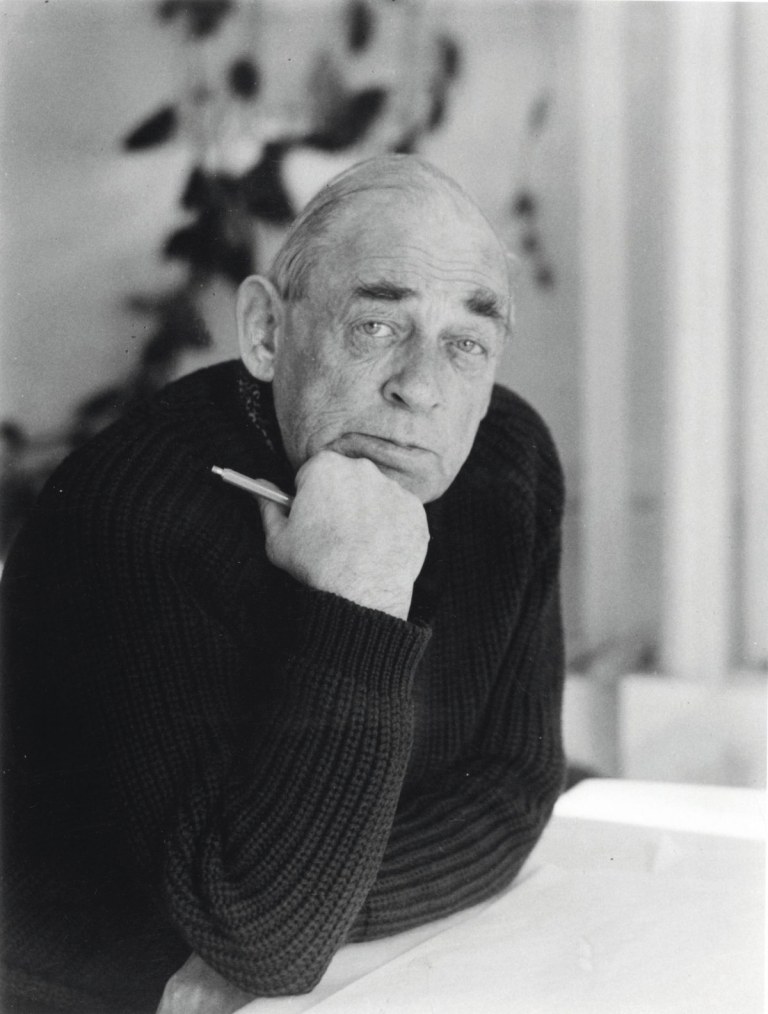
After the Second World War, the Helsinki University of Technology needed more space, because Finland needed more engineers. These engineers were meant to serve the growing industry and technological research sector (see www.aalto.fi). So it was that, in 1948, the decision was made to move the university from its small quarters in the district of Hietalahti in Helsinki to a more spacious area in Otaniemi, Espoo.
In January 1949, an architectural competition concerning a plan for the state land in Otaniemi was announced. The competition was open to all members of the Finnish Association of Architects. The winning entry, designed by Aino and Alvar Aalto, was entitled “Ave Alma Mater, Morituri Te Salutant (”Alma mater, the dying salute you”). While the competition was still in progress, Aino died of cancer (see e.g. yle.fi, in Finnish).
Alvar Aalto continued to work on the land use plan of Otaniemi based on the winning proposal. In August 1953, the Ministry of Trade and Industry decided that the design of the main building of TKK was a top priority. Alvar, his new wife Elissa and Rector of TKK Martti Levón set to work. The university council of TKK tasked Aalto’s architectural firm to draw the architectural sketches for the main building block without an open architecture competition, which caused resentment among the architectural community.
The poor economic situation took its toll on the construction budget of the main building and the design had to be toned down. When these cutbacks and finishing the designs were discussed in a meeting with TKK’s advisory committee in November 1954, Alvar Aalto, who was responsible for the design of the building, lost his temper.
During the meeting, Aalto apparently boxed the ears of Petri Bryk, mining counsellor and managing director of Outokumpu Ltd. and a new member of TKK’s advisory committee. The rumour goes that Bryk vowed he would strike the next blow, but Aalto left the meeting before he could do so. The incident has been recorded in the notes of architect Jussi Lappi-Seppälä who had at the time recently become the general manager of the Finnish National Board of Building.
It appears that the incident was caused by conflicting artistic and financial views (see Nykänen 2007, p. 128). Lappi-Seppälä has suspected that Aalto’s reaction was also fuelled by the disagreement between Aalto and himself (see Lappi-Seppälä 1972, p. 160). There was a dispute between the Finnish Association of Architects and the Finnish National Board of Building, the so-called architectural schism that lasted from 1954 to 1957. The dispute was personified in the rift between Aalto, Chair of the Finnish Association of Architects, and Lappi-Seppälä. Docent Panu Nykänen believes that the dispute centred on the question of whether architects owned the artistic rights to the buildings they designed. (see Nykänen 2007, p. 132)
The design for the main building was eventually completed. The final drawings were ready in January 1955. Construction of the main building lasted from 1961 to 1964. The building was inaugurated in 1966.

Sources
- Panu Nykänen: Otaniemen yhdyskunta (2007)
- Panu Nykänen & Iina Kohonen: Tupsukansan koti (2003)
- Alvar Aalto Säätiö & Jaakko Penttilä: Teknillisen korkeakoulun päärakennus ja kirjasto (2002–03)
- Jussi Lappi-Seppälä: Elävältä se maistui (1972)
- yle.fi
- www.aalto.fi